Ghost Food by Miriam Simun and Miriam Songster
Ghost Food is a mobile food truck that puts together sense and food pairings using a wearable device that helps engage smell. Ghost Food has been deployed in Newark and Philadelphia thus far.
Introduction
Ghost Food is a mobile food truck that puts together sense and food pairings using a wearable device that helps engage smell. Ghost Food has been deployed in Newark and Philadelphia thus far.
“Inspired by insect physiology (insects use their antennae to smell and thus navigate their world) and long-standing human traditions of technological extension of the senses, the device inserts direct olfactory stimulation into the eating experience. Scents of foods threatened by climate change are paired with foods made from climate change-resilient foodstuffs, to provide the taste illusions of foods that may soon no longer be available. GhostFood staff serve the public, guiding visitors through this pre-nostalgic experience, and engaging dialogue.”
A Sensory Experience
Ghost Food focuses on smell, in a speculative future time when people don’t have access to many foods we eat today. So, for example, what if you can't eat fish anymore because all of the fish are radioactive, or we overfished the ocean? We might then recreate a taste of tuna by using wearable smell amplification while you're eating something else, such as chicken, or even grasshoppers. It inserts direct olfactory stimulation into the eating experience.
Simun and Songster use the food truck as a vehicle of engagement. Food trucks already have an image and role in society—it is something that people know and love. Ghost Food is using the food truck as an experiential interface to connect with a future in which we may not have the food we love in the future, and that, at best, we are going to have to create a simulated experience of that food..
Wearable Provocation
It is a direct invitation to do something more than look or think about this future. It asks participants to actually eat while wearing this olfactory device. To experience the work, you insert a plastic device into your nose and then eat the proffered food. The labeling of the food tells you what you are eating and what you are supposed to be eating.
This work garnered a great deal of public and media attention, and brought issues of over-consumption, environmental degradation, and planetary limits into an everyday, highly relatable context. We have to face the fact that many of the foods we love may not be around in the future. That sense of loss is very strong, and as delivered in a method or convention of a food truck, allows people to more readily understand.
What makes Ghost Food so successful is that it doesn’t get caught up in what Stuart Candy calls compound innovation. Compound innovation is when you are trying to provide new information to people but deal with too many variables. People try to communicate with a new genre or a new technique and then add new content into that new genre. By operating out of a food truck, Ghost Food reduced the variability. By using the food truck, Simon and Songster created a form of “future jamming,” smuggling in some really provocative scenarios content in a familiar present day form..
Bridging the Experiential Gulf
That's where the idea of the experimental gulf comes in. How does one bridge the lived experience of today, with an inherently abstract future possibility space? Part of the bridge is to use conventions that people already understand. For instance, while there might not be newspapers in the future, proposing a provocative newspaper headline such as “Corporations Elected President” can still have impact as we toggle from the present to the future and effectively telescope between these different worlds. And so in order to do that, I think you need some constants, or some familiar mechanisms, which you can play off of and experiment with.
That's where much of the experiential arts and interaction design is very successful in knowing where to push, when to push, and how far you can push, depending on what the story or experience needs. The fact that we now have many examples of artists, designers, futurists, performers trying this out, indicates to me that we're learning how to articulate message, genre, audience, and continued afterlife. I think those designing future-oriented art, design, and experiences are learning to use these theories, tools, and techniques in extremely powerful and effective ways.
No comments yet. Why not add the first?
Acknowledgements & Credits
Ghost Food by Miriam Simun and Miriam Songster
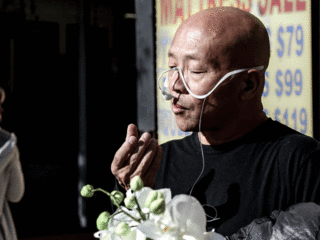
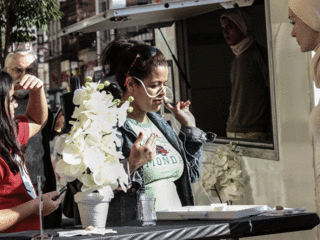
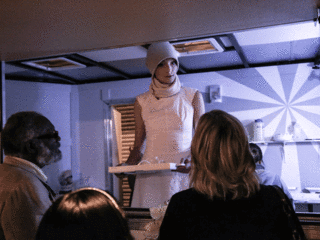
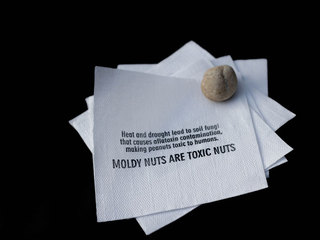
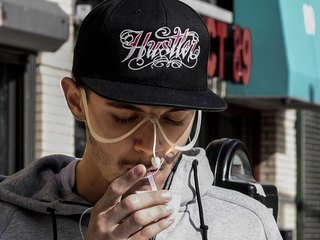
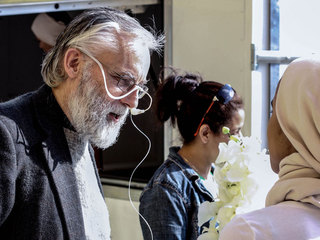
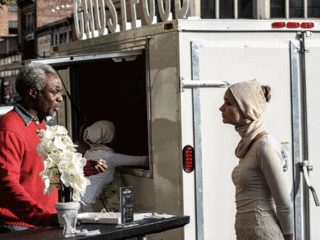
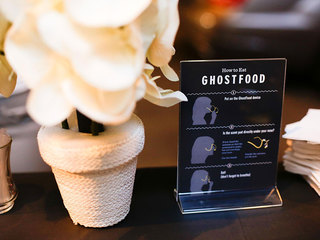
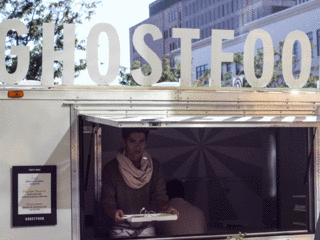
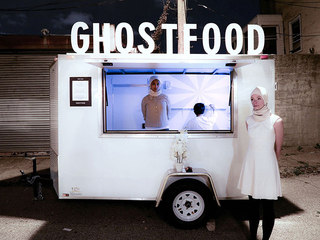
← Back to work
0 Comments